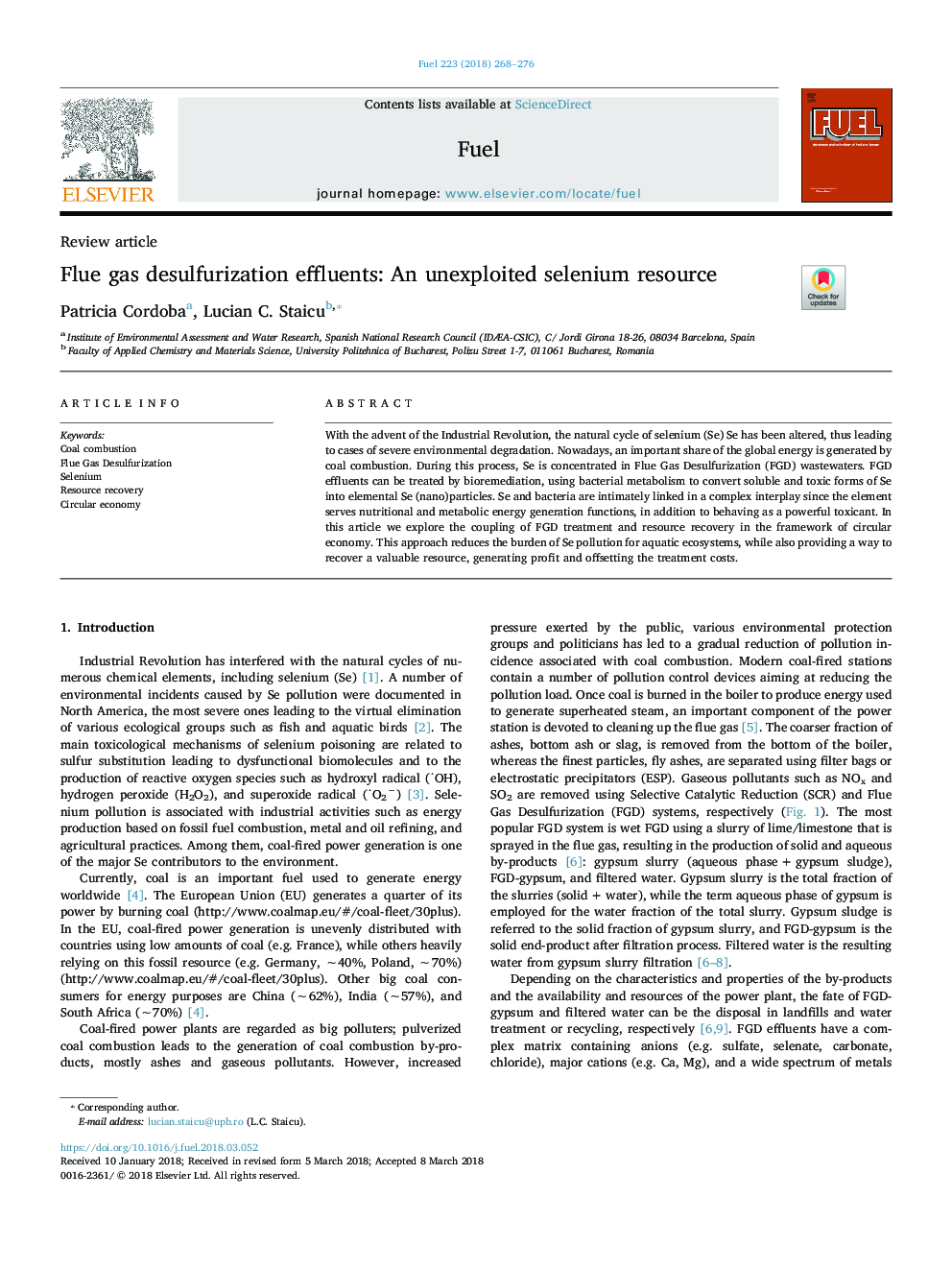| Article ID | Journal | Published Year | Pages | File Type |
|---|---|---|---|---|
| 6631236 | Fuel | 2018 | 9 Pages |
Abstract
With the advent of the Industrial Revolution, the natural cycle of selenium (Se) Se has been altered, thus leading to cases of severe environmental degradation. Nowadays, an important share of the global energy is generated by coal combustion. During this process, Se is concentrated in Flue Gas Desulfurization (FGD) wastewaters. FGD effluents can be treated by bioremediation, using bacterial metabolism to convert soluble and toxic forms of Se into elemental Se (nano)particles. Se and bacteria are intimately linked in a complex interplay since the element serves nutritional and metabolic energy generation functions, in addition to behaving as a powerful toxicant. In this article we explore the coupling of FGD treatment and resource recovery in the framework of circular economy. This approach reduces the burden of Se pollution for aquatic ecosystems, while also providing a way to recover a valuable resource, generating profit and offsetting the treatment costs.
Related Topics
Physical Sciences and Engineering
Chemical Engineering
Chemical Engineering (General)
Authors
Patricia Cordoba, Lucian C. Staicu,
